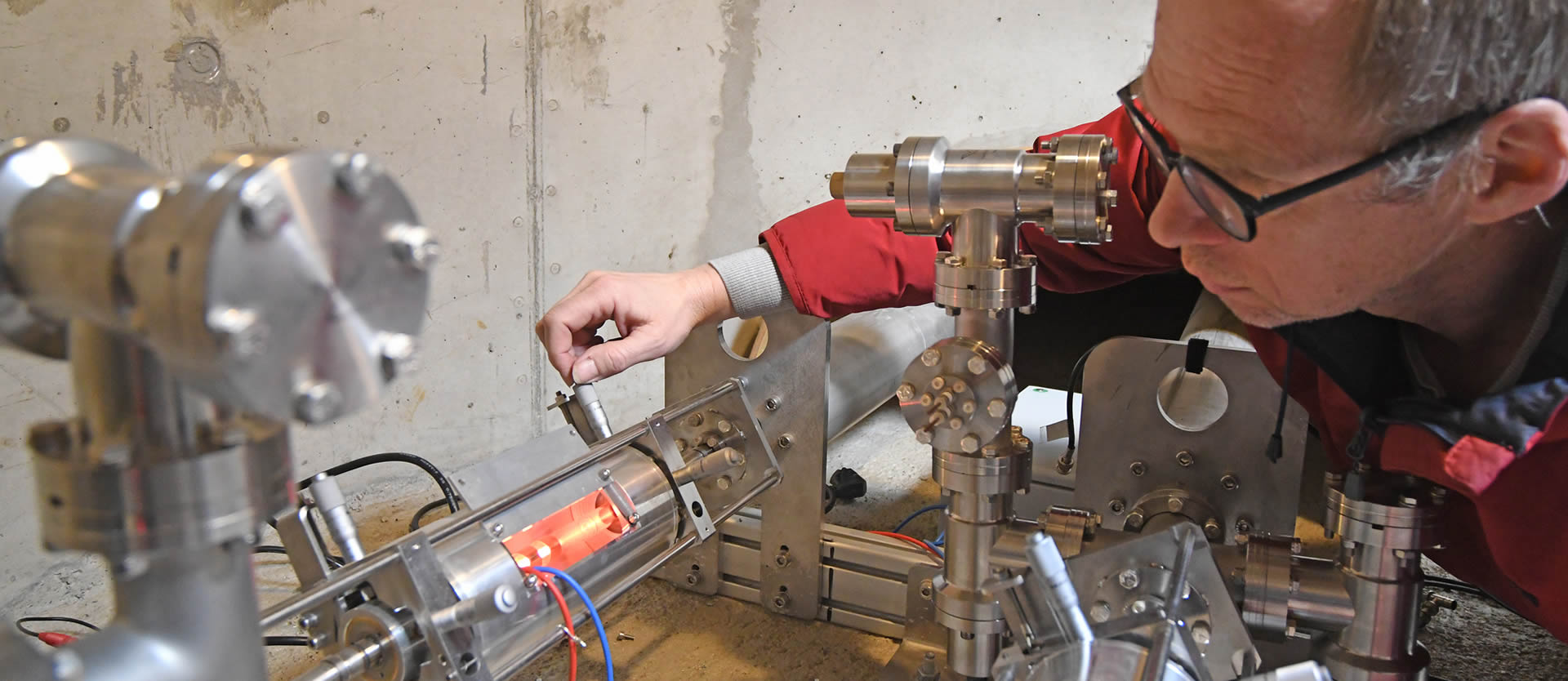Light as a sensor of ground motion
“The idea of utilizing laser interferometry in combination with seismology is a relatively recent concept, and ROMY is definitely a pioneering project,” says Heiner Igel. The laser has now been in continuous operation for several months, and its stability conforms to the design specifications. “Our measurements require nanometer precision,” Igel emphasises. The instrument passed its first real test when it successfully registered the motions induced by an earthquake in Central Italy, many hundreds of kilometers away from Fürstenfeldbruck. The valuable data acquired on that occasion will contribute to the understanding of the earthquake mechanism.
The project has been funded in part by an Advanced Investigator Grant awarded to Heiner Igel in 2013 by the European Research Council. LMU Munich also provided supplementary financing, and the Research Group in Satellite Geodesy at the Technical University of Munich (TUM) is also actively involved in the venture.
The new light-based seismometer promises to usher in a new era in the observation and interpretation of ground motions, as rotational ground motions cannot be detected by conventional instruments. This is not surprising when one considers that, at observatories that are remote from the epicentre of the source earthquake, the magnitude of such motions is typically on the order of nanometers. So it’s no wonder that the detector employed must be exquisitely sensitive. The new ring laser in Fürstenfeldbrück is the first such sensor. The extremely high stability of the oscillating light waves it generates provides the required sensitivity and precision. In a vacuum, light propagates at a constant speed, and visible light oscillates at frequencies of just under 1015 cycles/sec. The ring laser emits light waves in both directions and, thanks to the reflective mirrors, the waves in both beams exactly overlap. Rotational ground motions, however, differentially alter the frequencies of the counter-propagating beams, because they cause tiny changes in the lengths of the paths traversed by each. This fluctuation in frequency overlap results in a so-called beat, which is precisely analogous to the dissonance generated when two notes of slightly different pitch are sounded together. The interference pattern can be accurately measured, and this in turn allows one to determine the direction of ground motion.
“The system is still in its initial test phase,” says Heiner Igel. “But we are confident that ROMY will put us in a position to gain entirely new insights into the Earth’s structure and the mechanisms that give rise to earthquakes.”
Then Igel climbs up the ladder back into the full light of day. As he closes the hatch, the cover catches the spring sunlight, while the laser beams below tirelessly follow their triangular paths.













